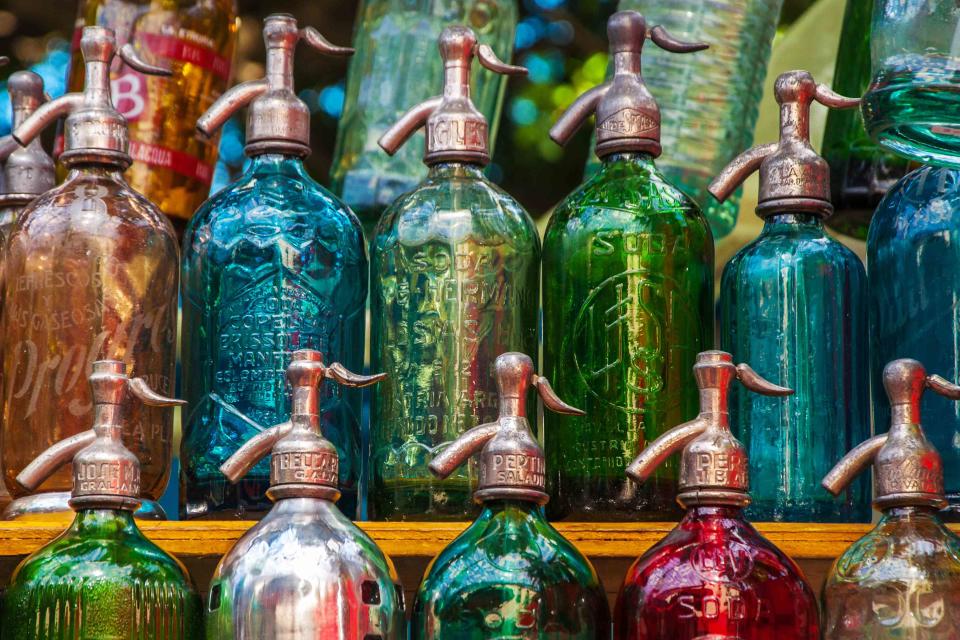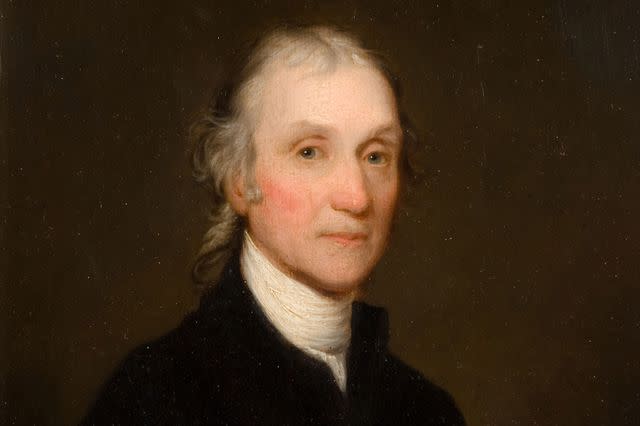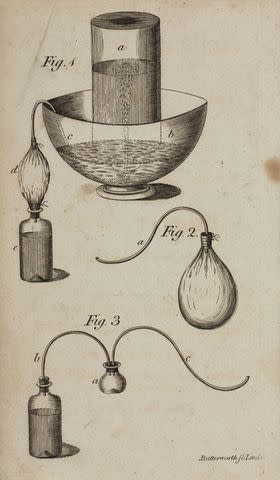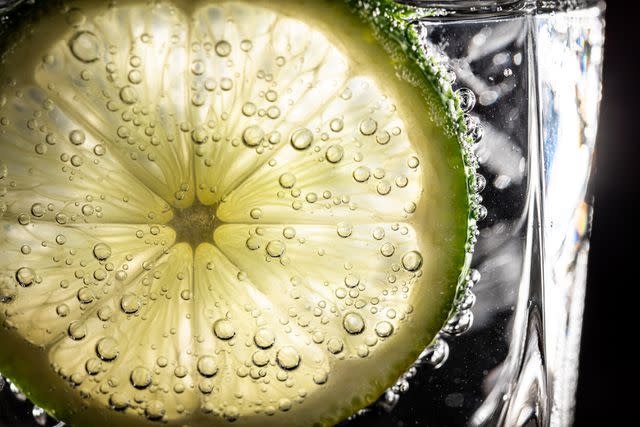How a British Scientist’s Chance Encounter with Ben Franklin Gave Us Sparkling Water
Though seltzer is everywhere in modern society, methods to force carbonate liquids are a relatively recent invention.

DC_Colombia / Getty Images
People love having bubbles in their drinks. Not only are they willing to pay a little extra for sparkling water, but century-spanning industries have been built devoted to carbonating water, soda, juices, and more.
It’s easy to take carbonated beverages for granted. But sparkling water has a long, complicated origin. And if it weren’t for pig bladders, war, a chance encounter with one of the United States’ founders, and years of scientific discovery, you’d likely be reading this with a glass of flat, boring, tap water.
Natural bubbles
Centuries before SodaStreams graced kitchen counters, ancient Romans had already coined the phrase “soda fountain” or aqua saltare. But rather than the force-carbonated siphons that would be developed centuries later, these were springs of “naturally occurring mineral waters that bubbled from the earth,” writes Judith Levin in Soda and Fizzy Drinks: A Global History. These waters were often believed to offer healing properties.
The Romans weren’t alone in this belief. In 17th century England, people would travel to Malvern to drink and bathe in the region’s naturally occurring bubbly mineral water, leading Malvern Hills to become the site of one of the earliest known bottled water enterprises in the early 1600s.
Given Britain’s historic ties to commercial sparkling water production, it’s only fitting that another Englishman, Joseph Priestley, would figure out how to harness bubbles.

Heritage Images / Getty Images
Portrait of Joseph PriestlyPriestley had always had an interest in the sciences. In December 1765, he attended an event with the Honest Whigs, a group that discussed politics and science, where he first met the American statesman Benjamin Franklin. The two hit it off and corresponded for over two decades, discussing a variety of interests. Among these topics? How to infuse and suspend carbon dioxide bubbles into still water.
Related: Sparkling Water vs. Mineral Water: What's the Difference?
The origins of artificially created sparkling water
Priestly built off the work of two scientists. One of these was Jan Baptista van Helmont, a Belgian physician and chemist who identified CO2 invented the word “gas”(derived from “chaos”) to describe these substances which he observed to be thicker than air but finer than mist or vapor. The other, Joseph Black, was a Scottish physicist and chemist, who demonstrated CO2, or “fixed air” as it was known, could be created by mixing marble with acid.
According to an article published by McGill University, Priestly mixed sulfuric acid with chalk and collected the resulting CO2 in a pig’s bladder. “He then transferred it into an inverted water-filled bottle and shook the container until the water had absorbed the gas,” writes Levin in Soda and Fizzy Drinks.

Science & Society Picture Library / Getty Images
A 1772 illustration demonstrating Priestley's sparkling water contraptionPriestley's discovery quickly spread throughout Europe, and in 1772 it won him the Copley Medal, the Royal Society’s highest honor. But the pig’s bladder gave the water a certain urine-like characteristic, which prompted scientists like John Nooth, a Scottish physician, to try and improve on this technique. Nooth created a device that consisted of three glass vials stacked atop one another. The bottom vile contained CO2, the top held water, and the two substances would mix in the middle.
When Nooth showed Priestly his invention, the latter became furious, writes Tristan Donovan in Fizz: How Soda Shook Up the World. Priestly insisted that if Nooth tasted urine, it was likely because someone was relieving themself in his beverage, and not because of the bladder method. However, Priestly eventually conceded that Nooth’s device was far more efficient at carbonating water, and 1,000 of Nooth’s home carbonation apparatuses were sold within the first few years.
Related: The 4 Best Soda Makers, According to Our Tests
How carbonated water went commercial
But the person arguably most responsible for putting sparkling water on the map was a man by the name of Johann Jacob Schweppe. After reading about Priestly’s method of infusing water with CO2, he became gripped with the idea of building a better carbonation system.
By 1780, Schweppe had developed a crank-operated compression pump that would combine CO2 gas and water in a barrel that would be shaken to create agitation, forcing the gas to be absorbed into the liquid.
People loved Schweppe’s bubbly water so much that it was soon shipped all over Europe.

hiroyuki nakai / Getty Images
Wanting to expand the business further, Schweppe moved from Geneva to London in 1792. However, it proved to be harder than he had originally anticipated. Homesick, the soda maker decided to pack up his things and head back to mainland Europe, but France had since declared war on England, and Schweppe became trapped in London. Fortunately for him, London’s high society caught wind of Schweppes sparkling water, and soon it was served at elite functions, becoming the official sparkling water of royalty like King William IV.
Schweppe eventually sold his company, but his name and impact on the soda industry carries on today.
By the turn of the 19th century, sparkling water was no longer just for the elite. In 1832, John Mathews, another British inventor, created a soda siphon that could “carbonate water in quantities suitable for a drugstore or street vendor.” Soon, soda siphons were found at soda fountains in nearly every city across Western Europe and the Americas. Then in 1903, Guy Hugh Gilby, another Englishman, created the first version of the at-home siphon.
These days, according to Neilson Data, sparkling water has grown into a $5 billion-a-year industry in the U.S. alone and was valued at nearly $28 billion globally in 2023. And as the wealth of carbonated water options and consumer demand continue to expand year over year, most analysts project these numbers to only increase.
Not a bad result for an industry that got its start by squeezing CO2 from pig bladders into bottles.
For more Food & Wine news, make sure to sign up for our newsletter!
Read the original article on Food & Wine.

